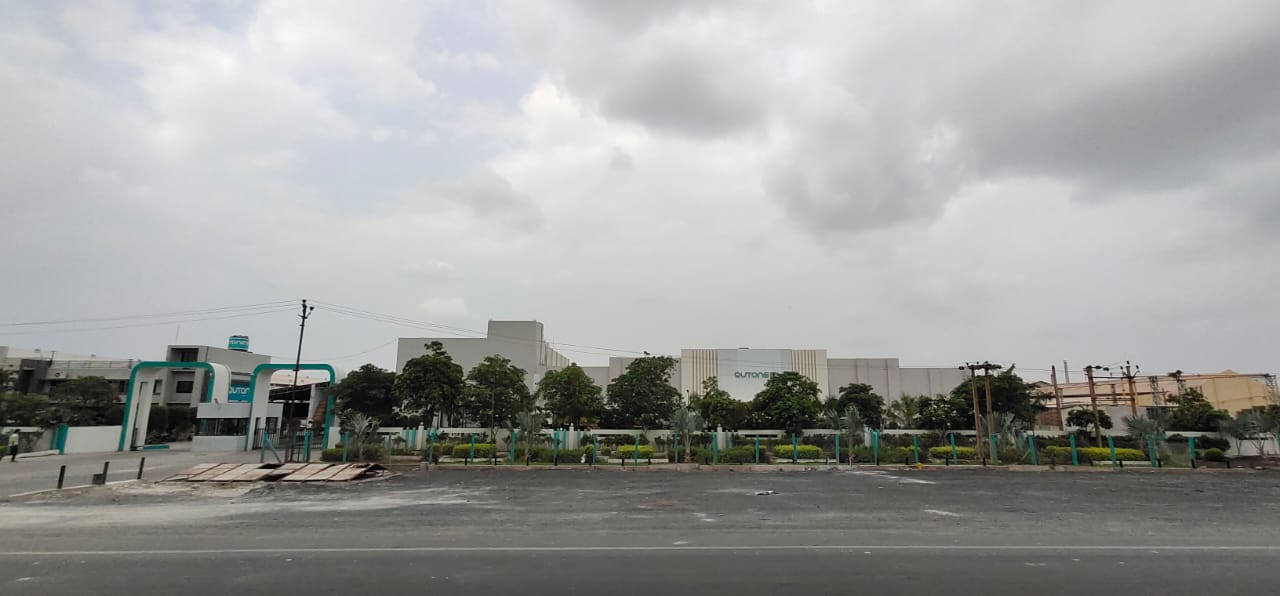
From Digital Printing to QC
Ceramic Tile Manufacturer: From Digital Printing to QC
It's easy to forget how exactly ceramic tiles are made for homes or major projects. The tiles are crafted using the latest technology, carefully selected materials, and rigorous quality control.
At Qutone Ceramics, we utilize the latest digital printing technology, eco-friendly methods, and rigorous testing to manufacture tiles that not only look fantastic but also perform well in demanding environments. This is a step-by-step guide on how to transform raw ceramic tiles into certified goods that are ready for installation.
Raw materials & body composition
The body composition of a tile is what gives it its strength. Ceramic tiles are formed of a mix of natural minerals, and each one has a different job:
- Clay makes things strong and flexible.
- Feldspar acts as a flux, which lowers the melting point during firing.
- Quartz and silica make things harder and less prone to getting smaller.
- Kaolin maintains a consistent white color and maintains the same size.
From Start to Finish
Crushing and milling: This turns materials into a fine slurry.
Mixing: To achieve the correct chemical balance, the slurry is stirred.
Spray drying: It converts the liquid mixture into evenly sized granules with the proper moisture content, which is ideal for pressing.
Pressing: High-pressure hydraulic presses (up to 7200 tonnes) turn the powder into green (unfired) tiles.
The appropriate body composition changes how hard, porous, and water-holding it is. For example, wall tiles could be lighter and absorb more water, but floor tiles need to be heavier to function well in tough settings.
Digital printing & glazing workflow
Tiles appear very different now that they can be printed using digital inkjet. With this technology, makers can create items that resemble marble, wood, concrete, and even metal in a remarkably realistic way.
The Steps:
Applying the base glaze: A liquid glaze is applied on the surface to make it suitable for design.
Inkjet digital printing: High-resolution printers spray mineral inks directly onto the tile surface, creating incredibly intricate patterns and textures.
Overglaze and protective coats: Clear glazes are used to cover the pattern and enhance its strength.
Special finishes: Depending on the line of products, effects like glossy polish, satin matte, metallic shimmer, or 3D textures that are raised are added.
Why it matters: Digital technology preserves the colours, but it also allows you to adjust the shades in a way that mimics natural stone (V1–V4 classification).
Firing, sizing & calibration
After being glazed and printed, tiles undergo tests to assess their robustness and accuracy in size.
Firing in roller kilns: The tiles are heated to between 1100 °C and 1250°C, which makes the body firm and long-lasting.
Controlled cooling: Slow cooling stops cracks and thermal shock from happening inside.
Sizing and calibrating: After the tiles are fired, they are ground down to the correct size and thickness, which is necessary for a smooth installation.
Correction: Lasers are used to cut high-quality tiles, creating sharp edges. This helps you utilise smaller grout lines and gives the finish a smooth look.
Why firing temperature matters: Higher temperatures make the tiles less porous, tougher, and better at resisting chemicals, which means they can be used every day.
Testing, certification & ESG
Before a batch leaves the factory, the tiles are thoroughly tested to ensure they meet both domestic and international standards.
Quality Control and Testing
Water absorption tests: Sort tiles into groups, such as porcelain with less than 0.5% water absorption.
Mechanical strength: Tiles are tested to determine how easily they break and how strong they are when they do break.
Resistance to slipping: The coefficient of friction (R9–R13 classification) is used to rate the resistance of surfaces.
Frost and thermal shock resistance: This ensures that tiles can withstand sudden changes in temperature when exposed to the elements.
Control samples are used to check for consistency in shade and gloss.
Warpage testing utilizes precise technologies to detect flatness and eliminate tiles that bend or curve.
Certifications
Tiles that meet ISO, CE, and ASTM standards are safe for use by people worldwide, including architects, builders, and end-users.
Sustainability and ESG
Modern ceramic tile companies like Qutone Ceramics do more than simply make outstanding products; they also use environmentally responsible technologies in their work:
- Closed-loop water recycling limits the flow of dirty water.
- These kilns are energy-efficient because they utilize heat recovery systems, which reduce fuel consumption.
- Dust and emission controls collect particles and stop CO₂ from being released.
- Recycled content: Making the tile body out of industrial waste, where it's possible.
- When attaining green building certifications like LEED, GRIHA, and WELL, it is crucial to use environmentally friendly tiles.
Frequently Asked Questions
Why does firing temperature matter?
This is because it changes the tile's density, strength, and porosity. Tiles that are fired at higher temperatures are harder, last longer, and absorb less water.
How is shade variation controlled?
By employing calibrated digital printers and limiting how much ink is used. To help buyers know what to expect, manufacturers also put tiles into groups (V1–V4).
How is warpage tested before dispatch?
Digital gauges are used to measure tiles that are placed on flatbeds. We won't accept any tiles that go over the tolerance limitations.
Which sustainability practices are meaningful?
Using recycled raw materials, closed-loop water systems, and controls for dust emissions are all fantastic ways to protect the environment.
Book a virtual plant tour & spec review.
Do you want to know how the best tiles are made? You may now schedule a virtual tour of the factory and an evaluation of the specs with Qutone Ceramics. Find more about our complicated production process, our efforts to be more eco-friendly, and how our certified tiles can make your next project better.

Write a Comment